Iron-Rich Foods:
What You Need to Know
Have you wondered how to get more iron-rich foods in your diet? After all, iron deficiency is the most common nutritional deficiency. Therefore, it can be hard to get enough iron-rich foods, especially for women and children. According to the World Health Organization, iron is the only nutrient deficiency that is significantly prevalent in both developed and developing countries. In fact, over 30% (2 billion) of the world population is anemic. So, in today’s relevant blog, I will explore iron-rich foods, why we need them and how much we need to consume.
The intention of this “Iron-Rich Foods” blog is to raise awareness on the importance of iron in our diet for optimal body functioning. Additionally, it’s hoped this blog will inspire you with new, creative, iron-rich meals.
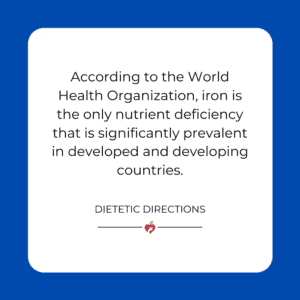
Why We Need Iron:
- Makes red blood cells; therefore, if we don’t have enough this is known as Iron Deficiency Anemia)
- Transports oxygen throughout the body. Consequently, helps provide body with energy
- Supports the brain and immune system
- Necessary for infant development if pregnant
- Helps maintain healthy skin, hair and nails
What are the top iron-rich foods? Find out what you need to know to get enough #iron! #dietitian #blogger #anemia Click To Tweet
Two Types of Iron
First, it is essential to differentiate the two different forms of iron:
Heme Iron – The most readily absorbed form of iron; found in meat, shellfish, poultry and fish. On average, people absorb between 15-35% of the heme iron in food. Interestingly, the body absorbs two to three times more heme iron versus the non-heme form. Additionally, in meat, fish and poultry about half (55-70%) of the iron is heme form (not 100% heme iron) with remaining non-heme iron.
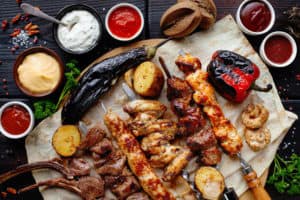 Did you know? Meat, shellfish, poultry and fish are all excellent sources of heme iron, which is better absorbed by the body.
Did you know? Meat, shellfish, poultry and fish are all excellent sources of heme iron, which is better absorbed by the body.Non-Heme Iron – Less well absorbed (around 3 to 20% absorption) but much more abundant form of dietary iron. It’s found primarily in plant foods (legumes, grains, nuts, seeds, some vegetables) along with iron-fortified foods such as infant cereals.
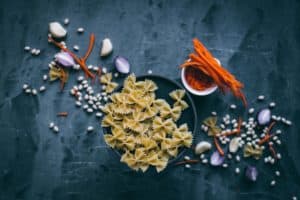 Grains, nuts, seeds, beans, legumes, and vegetables are all sources of non-heme iron.
Grains, nuts, seeds, beans, legumes, and vegetables are all sources of non-heme iron.Absorption of Iron-Rich Foods
Since many iron-rich foods can still be poorly absorbed by the body, especially non-heme sources, it is imperative to optimize absorption through food pairings.
First, be aware of iron absorption inhibitors. These include: tannins in coffee or tea, calcium, and fibre (phytates), which can decrease absorption of iron-rich foods.
 Be cautious of iron absorption inhibitors such as coffee and calcium in milk, which decrease iron absorption.
Be cautious of iron absorption inhibitors such as coffee and calcium in milk, which decrease iron absorption.Iron Absorption Enhancers:
1. Add Vitamin C:
Adding vitamin C to meals enhances the absorption of non-heme iron. In fact, a research study found that adding 63 mg of vitamin C to a grain-based, non-heme iron-rich meal boosted iron absorption by almost 300%.
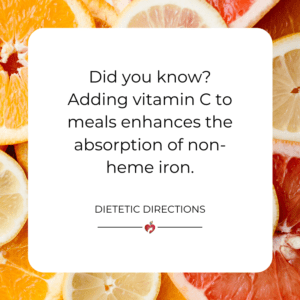
Foods Rich in Vitamin C:
- Broccoli
- Bell Peppers
- Sweet Potatoes
- Tomatoes
- Oranges
- Cantaloupe
- Mangos
- Strawberries
- Parsley
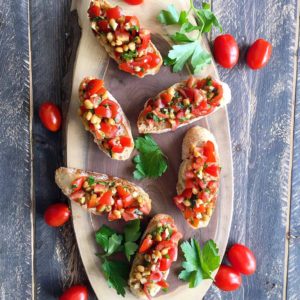 This Garlic Lentil Bruschetta is a simple and tasty appetizer that uses tomatoes (vitamin C) to enhance iron absorption in the lentils.
This Garlic Lentil Bruschetta is a simple and tasty appetizer that uses tomatoes (vitamin C) to enhance iron absorption in the lentils.2. Pair Heme with Non-Heme Iron
Another strategy (if you’re not vegetarian or vegan) to enhance the non-heme iron absorption is to add a form of heme iron to your meals. For example, mixing ground beef (heme iron) with lentils (non-heme iron) helps our body to absorb more of the non-heme iron in the beans.
Iron-Rich Foods: Meal Examples
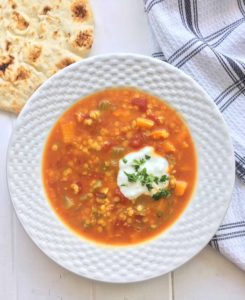 The tomatoes (vitamin C) in this Indian-Dhal-Soup enhance the non-heme iron absorption from the lentils.
The tomatoes (vitamin C) in this Indian-Dhal-Soup enhance the non-heme iron absorption from the lentils.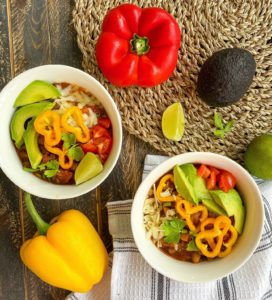 The tomatoes (vitamin C) and the beef (heme iron) in this Chilli enhance the absorption of non heme iron from the beans.
The tomatoes (vitamin C) and the beef (heme iron) in this Chilli enhance the absorption of non heme iron from the beans.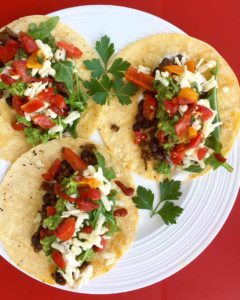 Try this Tasty Taco recipe with meat (heme iron) to enhance the iron absorption of lentils. The tomatoes, lime and peppers provide vitamin C as well to increase absorption.
Try this Tasty Taco recipe with meat (heme iron) to enhance the iron absorption of lentils. The tomatoes, lime and peppers provide vitamin C as well to increase absorption.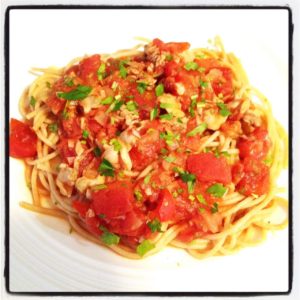 The heme iron in the clams in this Whole Grain Pasta in Tomato Clam Sauce enhances non-heme iron absorption from the pasta. The vitamin C in the tomatoes also enhances iron absorption. Bonus!
The heme iron in the clams in this Whole Grain Pasta in Tomato Clam Sauce enhances non-heme iron absorption from the pasta. The vitamin C in the tomatoes also enhances iron absorption. Bonus!How Much Iron Do I Need?
| Age | Iron Requirement (milligrams) |
| Infant 7-12 months | 11 mg |
| Child 1 – 3 years | 7 mg |
| Children 4- 8 years old | 10 mg |
| Women 19 – 50 years | 18 mg |
| Men 19 – 50 & women over 50 years | 8 mg |
| Pregnant | 27 mg |
| Breastfeeding | 9 mg |
Dietary Reference Intakes (DRIs) developed at the Institute of Medicine (IOM).
Vegan & Vegetarian – Aim for nearly twice as much iron per day if you’re relying on plant sources alone.
Iron-Rich Foods
| Food | Serving Size | Iron (mg) |
| Oysters, cooked | 2.5 oz (75 grams) | 3.3 – 9 mg |
| Seafood – shrimp, scallops, crab | 2.5 oz (75 grams) | 2.2 – 2.3 mg |
| Beef, cooked | 2.5 oz (75 grams) | 1.4 – 3.3 mg |
| Eggs | 2 large | 1.2 – 1.8 mg |
| Chicken, cooked | 2.5 oz (75 grams) | 0.4 – 2 mg |
| Pork, cooked | 2.5 oz (75 grams) | 0.5 – 1.5 mg |
| Turkey, cooked | 2.5 oz (75 grams) | 0.3 – 0.8 mg |
| Plant-Based Iron-Rich Food Sources | ||
| Tofu, cooked | ¾ cup (150 grams) | 2.4 – 8mg |
| Oatmeal, cooked | ¾ cup | 4.5 – 6.6 mg |
| Lentils, cooked | ¾ cup | 4.1 – 4.9 mg |
| Edamame or lima beans | ½ cup | 1.9 – 2.4 mg |
| Spinach, Cooked | ½ cup | 2 – 3.4mg |
| Tomato puree | ½ cup | 2.4 mg |
| Potato with skin | Medium-size | 1.3 – 1.9mg |
NOTE: Remember that the iron in foods isn’t all absorbed by the body. Take into consideration the form of iron (heme or non-heme) and iron absorption enhances or inhibitors as mentioned above.
Iron-Rich Foods: Oatmeal Example
To pull the above concepts together, let’s use an oatmeal example. Therefore, when having your oatmeal for breakfast, your coffee (tannins) will decrease the absorption of non-heme iron in oats. The fibre in the oats and the calcium in the milk will also decrease iron absorption. However, don’t worry because you can add strawberries/blueberries (vitamin C) to increase the non-heme iron absorption (more on this below). Additionally, boost the non heme iron through pumpkin seeds, hemp seeds, or chia seeds added on top. It’s all about meeting your personal iron requirements during the (entire) day. Also, lab work can be done to assess ferritin status to determine if you are low in iron or anemic.
Higher Risk for Iron Deficiency
You might need more iron, either from dietary sources or from an iron supplement, if you meet the following criteria:
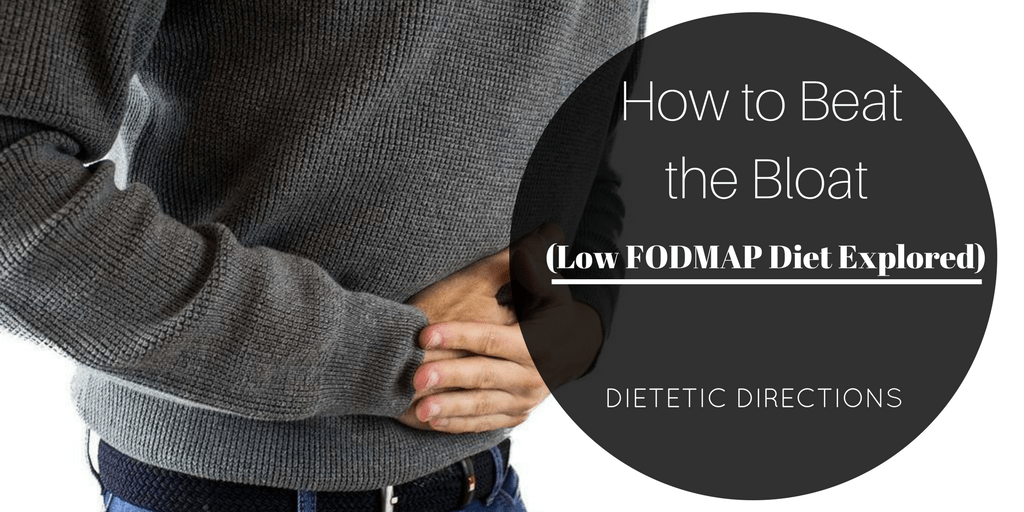
Should I Take an Iron Supplement?
It is best to have your iron checked by your doctor before supplementing. Similarly, if you are experiencing symptoms of fatigue, shortness of breath, or paleness, you should definitely have your iron checked by your doctor. Also, working with a registered dietitian is helpful to assess your dietary iron intake and recommend a supplement if needed. However, iron supplements can be constipating or hard on the stomach so you will want to find one that suits you best. Finally, we also want to avoid iron overload (taking too much iron), which can be damaging to the heart, liver, and other organs.
Thus, for personalized nutrition recommendations, speak with one of our amazing registered dietitians. We can support you to get enough iron-rich foods in your diet and determine if you require an iron supplement. Click to book with a dietitian for support. In fact, we provide in person, virtual or phone nutrition consultations.
Bottom Line:
Without a doubt, consuming iron-rich foods is encouraged to ensure you’re getting enough for optimal body functioning. Our body requires iron for red blood cell production, which impacts our energy, brain and immunity. Unfortunately, iron deficiency is highly prevalent in both developed and developing countries. Additionally, there are two different forms of iron (heme and non-heme), which are absorbed differently. So knowing how to pair these various foods can help enhance iron absorption.
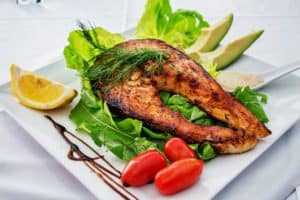
Finally, it’s your turn! Have you taken a closer look at iron in your diet to ensure you are getting enough? Similarly, what are your favourite ways to optimize absorption of iron-rich foods?
source https://betterweightloss.info/iron-rich-foods-what-you-need-to-know-dietetic-directions-dietitian/


No comments:
Post a Comment